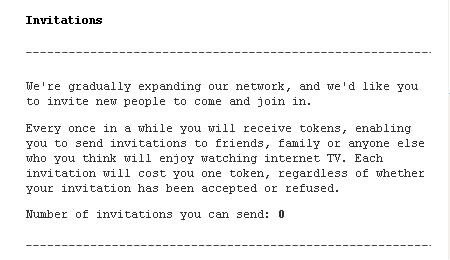What’s Next for Online Video?
Wednesday, March 7th, 2007 It’s a pretty broad question but many are asking it. In order to solve it and analyze future trends, we need to look at different areas of the online video world. For this reason, I have broken this post into a series of paragraphs outlining what I think we can expect from this exploding industry.
It’s a pretty broad question but many are asking it. In order to solve it and analyze future trends, we need to look at different areas of the online video world. For this reason, I have broken this post into a series of paragraphs outlining what I think we can expect from this exploding industry.
Content: The old Internet adage is true - content is indeed King. Without good video content, the eyeballs won’t come. And it’s not just about quantity, otherwise I would proclaim all YouTube competitors as being dead in the water. It’s also about topics, themes, and categories. This is where I see opportunity for niche sites to step in capture a chunk of the pie. Pornotube, for example, bases itself around the YouTube model, but focuses on a ‘certain’ niche. Metacafe prides itself by only adding a small number of highly-viral videos to the site everyday.
This is a trend we will continue to see not only in the video category, but also throughout the web as the Internet giants face a future, fragmented onslaught.
Two more tidbits to add from a content perspective: more and more traditional industries will begin or continue to leverage online video as a tool and selling feature (i.e. real estate, tourism, artists, etc..).
Finally, new content providers will make their mark on the industry. Already, TV networks are beginning to realize that they cannot combat this trend. Online video and IPTV are here to stay. Expect them to flourish. Proof lies in the actions of the networks. Most now stream full-length TV episodes from their websites. I would wager that other content providers will follow in these footsteps. But how will movie studios react and strategize?
Advertising: This obviously seems to be the revenue model of choice for the majority of video sites. But is it sustainable? If bandwidth charges surpass advertising revenues, the likely culmination is ugly. Expect all types of new advertising ploys on video sites including interstitials, pre- and post-roll, and unconventional banner placements.
Other revenue models: Ha. Do they exist? Definitely. A previous post described numerous ways YouTube could monetize the site beyond advertising. They include subscription services, affiliate programs, content sales (i.e. the iTunes for video), branded product sales (i.e. YouTube mugs), directory services, or even licensing. Other sites will need to evaluate this situation as revenue seems to be a big deal in the expensive, high-bandwidth world of online video.
Copyright issues and DRM: Bahhh… copyright, schmopyright. This stuff bores me to tears. All I can say is that if you think the TV networks and movie studios have their knickers in a knot, you ain’t seen nothing yet. Expect the TV giants to move first, as short clips are easily visible and prominent on many websites which makes for an easy case in court. Next, the studios will make a push against P2P networks and torrent sites. I expect this to be much less successful as it is less visible, hence harder to combat.
Companies to watch (or watch out) for:
…to name a few. You can add your up-and-comers to the list…
Some of my predictions (oh boy):
- YouTube will succumb to the same fate of Napster; no more illegal content kids.
- Joost will get bought over by a large TV network, further adding to the wealth of Zennstrom and Friis.
- Bandwidth will get cheaper, bittorenting will continue to grow, and more and more TV shows will be available for streaming online (these are my obvious predictions).
In this booming online industry, timing and execution will be key to a successful campaign… mixed in with a wee bit of luck.


